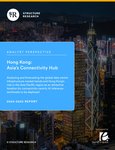With growth and productivity high on the political agenda worldwide, international interest in AI has exploded. Keir Starmer’s ‘AI Opportunities Action Plan’ and Rachel Reeves’ announcement to speed up infrastructure delivery highlight the UK’s commitment to bolstering data center infrastructure critical to AI advancement and economic growth.
Hyperscalers have traditionally led the way in data center development, and there are plenty of lessons to be learned to help other operators take advantage of growing opportunities that are being held back by resource constraints.
However, by learning from the innovators, operators can make strategic changes to meet the accelerating demand for data centers and seize this investment opportunity.
A blueprint for greener data centers
Operators are under pressure from governments and regulators to measure and report on sustainability and ESG. Regulations, such as the Corporate Sustainability Reporting Directive (CSRD), obligate organizations to share granular sustainability information. Total transparency on ESG and evidence-based reporting is becoming a must-have in data center sites.
By learning from hyperscalers, operators can achieve meaningful progress on ESG goals and avoid costly fines. Hyperscalers integrate sustainability early in the design phase, identifying ways to reduce waste and emissions by selecting energy-efficient materials and prioritizing local manufacturing and resources.
Teams will pre-configure equipment and cabling before deployment, minimizing on-site packaging waste and ensuring materials are easy to recycle or reuse. By coordinating material deliveries precisely to the right location at the right time with minimal waste, hyperscalers significantly lower the carbon footprint associated with logistics and installation.
Operators can explore innovative reuse of waste materials and energy in creative, community-focused ways. Some data centers channel waste heat to warm homes, offices, or greenhouses, maximizing resource efficiency by “using power twice.”
A holistic approach to energy resourcing from the planning phase is crucial. Strategic integration of natural and renewable energy sources ensures both sustainability and reliability, offering a replicable model for smaller operators in their own site planning.
A choreographed approach to safety
Data centers present a unique set of health and safety hazards. These high-tech, high-risk environments require operators to mitigate dangers such as noise exposure, heat stress, electrical safety, and heavy lifting.
By embracing a holistic view of risks and prioritizing coordination, operators can significantly reduce accidents while ensuring smooth project progression. As demand for data centers grows, regulations will tighten. Companies that adopt hyperscaler-led health and safety practices will be better positioned to meet future compliance standards and avoid accidents and costly delays.
Operators should establish long-term solutions for storing materials and implement strict on-site cleanliness rules to maintain well-organized, obstruction-free areas. Dedicated storage zones outside operational areas can be beneficial, along with structured cable management systems to minimize loose wires. Implementing hot aisle/cold aisle configurations ensures clear cooling pathways and improves energy efficiency.
A choreographed approach, where each team understands its role and responsibilities, ensures that all potential hazards are systematically addressed. When safety becomes an integral part of daily operations, project timelines and budgets benefit as well.
The backbone of future-proofed data centers
High-quality cabling is the foundation of data center connectivity. Get it wrong, and facilities won’t be able to support bandwidth needs for any longer than a few years, forcing costly rip-and-replace projects. Since data center budgets are often stretched by unexpected costs, cabling may suffer from inadequate investment.
Hyperscalers mitigate this risk by adhering to detailed cabling standards for every data center build. These comprehensive, granular documents cover cabling standards on everything from cabinets and containment to testing and earthing. Because data centers are usually built on a “just-in-time” delivery model, meticulous planning is required to get things right the first time and avoid delays. Early and detailed engagement with third-party experts in security, operations, power, cooling, and more is critical to ensuring that cabling infrastructure is fully integrated and free from bottlenecks.
Hyperscalers also maintain detailed databases of OEM guides, 3D models, 2D drawings, rack layouts, labelling, and cut sheets to assist with patching and future retrofits. These cut sheets create a “digital footprint” documenting cabling masterplans, tracking connectivity, and ensuring seamless hardware refreshes and site updates.
Cabling is viewed by hyperscalers as vital to futureproofing, enabling modular infrastructure that allows seamless hardware upgrades to cater for future workloads. By following this model, smaller operators can ensure long-term connectivity and scalability.
To BIM or not to BIM
Building Information Modelling (BIM) has become an essential tool for early decision-making, seamless collaboration, and smarter resource planning. In a high-pressure, AI-driven construction landscape,
BIM helps operators minimize costly delays, reduce errors, and futureproof their facilities.
BIM brings all stakeholders into one unified 3D model from the outset, creating a digital twin that accounts for every detail. This digital twin incorporates architecture, mechanical systems, electrical layouts, and cabling into a single, interactive model. The result? Reduced rework, fewer unexpected challenges, and streamlined project timelines.
With a detailed model in place, teams can anticipate when skilled workers are needed, preventing costly downtime. BIM also aids in procurement planning by identifying long-lead items in advance, reducing the risk of last-minute surprises – such as realizing critical cables are missing only after construction begins.
Beyond construction, BIM remains a valuable asset. Once a data center is operational, the model functions as a living document, aiding day-to-day operations, retrofits, and upgrades. When new technologies emerge, BIM’s scalable design enables facilities to expand or adapt with minimal disruption.
Adopting the hyperscaler playbook
As AI demand surges and data center infrastructure grows in importance, smaller operators must adapt or risk falling behind. By following the blueprint set by Hyperscalers – prioritizing sustainability, safety, robust cabling infrastructure, and BIM – operators can seize the opportunity to thrive in this new era.
Embracing these principles will ensure data centers are built for longevity, efficiency, and adaptability, supporting AI’s future while meeting regulatory and sustainability demands. In this evolving landscape, those who invest in strategic innovation today will be the data center leaders of tomorrow.
Read the orginal article: https://www.datacenterdynamics.com/en/opinions/building-the-best-what-hyperscalers-teach-us-about-safety-sustainability-and-infrastructure/





